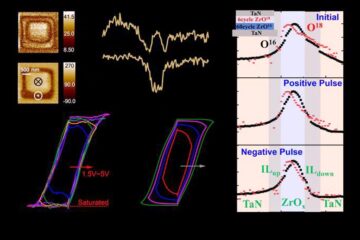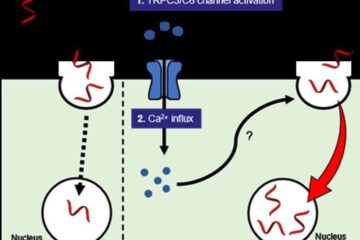Explaining the Mystery of the Voyager: RUB and US scientists reexamine theory after more than 60 years

With a new 3D-model for energy simulation scientists from Bochum and Huntsville, USA, are studying the 'physical mystery' of the Voyager.
Over 30 years ago the spacecraft detected particles in solar wind which were 'hotter' than they should have been according to the existing theory expounded by the mathematician Andrey Kolmogorov in 1941.
The Bochum plasma physicists Prof. Padma Kant Shukla and Dr. Dastgeer Shaikh from the University of Alabama are thereby the first to verify by means of computer simulation that the non-linear characteristics of turbulences in the plasma carried by the solar wind differs from the familiar model for dynamic fluids. The scientists have published their results in 'Physical Review Letters.'
Recognized for over 60 years: The 5/3 law.
According to Kolmogorov's theory there is a relationship between the size of eddies and the amount of energy released or dissipated by hot solar particles. The smaller an eddy gets the more it interacts with its surroundings, so the greater the energy loss.
For example this can be observed in the turbulent wake caused by a bridge piling in a flowing river. The energy of the tumbling wake dissipates only at the edges, where the smallest eddies interact with the smooth flowing water. The Kolmogorov law set the exponents for the relationship between eddy size and energy at 5/3: In a dynamic fluid, the amount of energy released should increase by a factor of x5/3 when the size of the eddy is reduced by a factor of x.
7/3 law: Efficiency increases by 40 percent
Observations made by the Voyager, other spacecraft and satellites show that the energy flow in plasma tends to follow a 7/3 law rather than the so-called 5/3 law proposed by Kolmogorov.
The dynamic spectrum of the wave lengths in plasma is therefore significantly greater than in other hydrodynamic systems. The efficiency of energy transfer between hot particles carried in the solar wind and cooler particles increases by 40 percent. The computer model developed by Shukla and Shaikh explains the sudden increase by the interaction between magnetic fields and the outward flowing currents of hot atoms, ions and electrons.
The magnetic field is responsible for energy cascades. Influenced and 'constrained' by magnetic fields, the small eddies serve to “damp” the energy in them.
Explanation for gigantic quantities of cosmic energy
“This is the same kind of thing that happens in a microwave oven,” Shaikh said. “If there is nothing there, the microwaves go out without releasing their energy. But the microwaves are absorbed by the food, causing them to release the energy and heat the food.”
“This development of the two scientists helps us to understand how the particles in the solar wind contain enormous quantities of energy. Prof. Shukla continued “It might also explain where the fastest and most powerful cosmic rays get their boost.” Scientists have struggled for decades to find plausible natural processes that could explain how some cosmic rays (atoms stripped of their electrons) are accelerated to almost the speed of light.
Title picture
3D simulations of fluctuation spectra in the Hall-MHD plasma, Dastgeer Shaikh and P K Shukla, Physical Review Letters 102, 045004 (2009): DOI:10.1103/PhysRevLett.102.045004
Further information
Prof. Dr. Dr. h.c. mult. Padma Kant Shukla
Theoretische Physik IV, Ruhr-Universität Bochum
Tel. 0234/32-23759
E-Mail: ps@tp4.rub.de
Editor: Jens Wylkop
Media Contact
More Information:
http://www.ruhr-uni-bochum.de/All latest news from the category: Physics and Astronomy
This area deals with the fundamental laws and building blocks of nature and how they interact, the properties and the behavior of matter, and research into space and time and their structures.
innovations-report provides in-depth reports and articles on subjects such as astrophysics, laser technologies, nuclear, quantum, particle and solid-state physics, nanotechnologies, planetary research and findings (Mars, Venus) and developments related to the Hubble Telescope.
Newest articles

Evidence for reversible oxygen ion movement during electrical pulsing
…enabler of the emerging ferroelectricity in binary oxides. In a recent study published in Materials Futures, researchers have uncovered a pivotal mechanism driving the emergence of ferroelectricity in binary oxides….

Next-generation treatments hitch a ride into cancer cells
Researchers from Osaka University discover that opening a channel into cancer cells helps antisense oligonucleotide drugs reach their targets. Antisense oligonucleotides (ASOs) are next-generation drugs that can treat disease by…

Boron deficiency: oilseed rape reacts as with infection and pest infestation
Genetic mechanisms uncovered… Boron deficiency has a devastating effect on oilseed rape and related plants. However, little is known about the underlying genetic mechanisms. A study shows that the response…





















